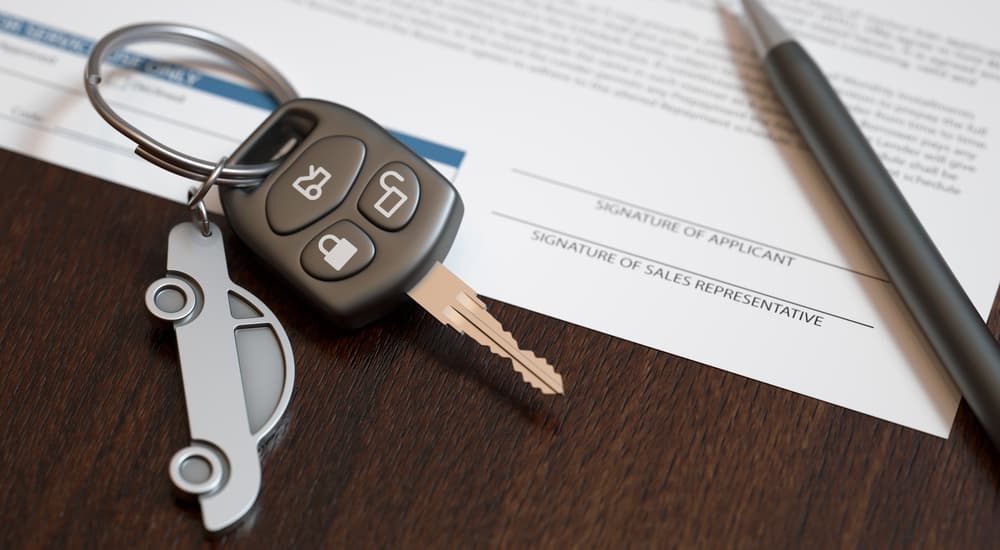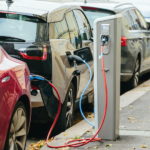Shopping for used cars isn’t difficult, that is, unless you decide you want an electric vehicle (EV). If all-electric is at the top of your list, your search requires a different set of considerations. This is especially true if this will be your first-ever EV. New vocabulary enters the equation, like charging, battery life, and driving range. Your research is a little more complex because it involves two different subjects.
Owning an EV is as much about your environment as it is about the vehicle itself. As an EV owner, charging is critical both at home and while you’re on the road. Is your home ready for an EV? What support systems do you need, such as a technician for repairs or a special charging setup in your garage? Knowing ahead of time how you’ll keep the vehicle fully charged and well-maintained is important.
Next, you need to know what to look for as you’re considering which EV to purchase. Wear-and-tear is different on an EV, and the complexities of its powertrain will limit where you can bring the vehicle for a pre-purchase inspection, which leads to the last key factor: where you’ll purchase your EV. It may matter the most, particularly if this is your first go at owning electric.
1. Know Ahead of Time How Far You’ll Normally Drive Every Day
The big buzzword with EVs is range. The range is the distance an EV can take you on a single charge and is what you will look at in place of fuel economy. It’s a make-or-break specification you should carefully consider before pulling the trigger on an EV. Work from home buyers have very different needs from daily long-range commuters – and weekend hobbies play a role too. If you have a long commute, finding an EV with a longer driving range is essential.
One of the most common EV buyer missteps is underestimating their range needs. Even if you work from home and walk to the grocery store, ask yourself if you’re a weekend road tripper or if you regularly visit friends and family who live far away. A good rule of thumb is to use the last year as your benchmark. Longer range vehicles will ultimately cost more, so this is an important consideration.

2. Get Prepared to Charge Your Vehicle at Home
How fast can your new EV reach a full charge? It all depends on whether the vehicle can accept Level 1, Level 2, or DC Fast Charging. Level 1 charging is the slowest method but also the easiest because you won’t need to make any changes to the outlets in your garage. Level 1 charging requires a common 120-volt household outlet. Unfortunately, it’s slow. Expect fewer than 5 miles of charge per hour.
Level 2 charging is significantly faster and more efficient, but you’ll need a 240-volt outlet and a dedicated circuit in your garage, which requires the help of an electrician. Equipping your home for Level 2 charging is expensive, but it’s a one-time cost that pays dividends in the form of convenience. On average, you’ll be able to fully charge your car in less than 8 hours. One big reminder: make sure the EV you buy comes with an appropriate charging cable. Replacement cables are expensive.
3. Find Charging Stations Along Your Daily Route
Not only will you need a charging port (or outlet) at home, but you’ll also want to familiarize yourself with all the charging stations along your daily route. The same holds true for road trips – the last thing you want is to be stranded on the side of the highway with no access to electricity. Luckily, as the number of EVs on the road increases, so does the availability of charging stations. One caveat: if you live in a rural area, your charging options may still be limited.
The simplest way to locate operable charging stations is to download one of the many charging station locator apps. Companies like PlugShare and EVgo provide instant access to maps and even driving directions, and some even feature live customer support. Be aware that you may have to pay a subscription fee to access all of the app’s features, but it’s well worth the price because you’re just a few taps away from finding a spot to hook up.

4. Educate Yourself About How to Determine Battery Health
Once you’ve done your homework on charging, it’s time to find your EV. At the top of the due diligence list is battery health. This is where authorized dealers come in. You will need a qualified, trained technician to verify the vehicle’s battery life. It’s not something you can do accurately on your own. Your local authorized dealer can perform a diagnostic assessment and let you know how much charging life remains.
All batteries deteriorate over time. Much like your smartphone, as the battery ages, it diminishes the total percentage of charging ability. It’s not unusual to see a 20 percent reduction in the first year of ownership. Think of it like odometer mileage in reverse – every percentage point of diminished capacity equals a reduction in value. In gas-powered vehicles, the higher the mileage, the lower the value. In EVs, the lower the battery capacity, the lower the value.
5. Carefully Review the Vehicle’s Maintenance History
Speaking of dealers, if the car you’re considering hasn’t received regular maintenance at an authorized dealer (ideally the dealer that represents the same brand you’re buying), you might want to walk away. Electric vehicles require less maintenance (no more oil changes!), but they still need regular attention. At a minimum, battery inspections are key to ward off any unforeseen issues or defects.
This is where you’ll want to carefully consider whether buying from a private party or unaffiliated automotive retailer is actually a good idea. The thing is, these resellers have no skin in the game – once they’ve offloaded the car, you’re on your own. Of course, you can make the smart decision to receive maintenance and service from an authorized dealer going forward, but the unknowns could end up being expensive.

6. Learn About Any Remaining Warranty Coverage
EVs feature different warranties than combustion engine vehicles. For example, i’s not uncommon to see 100,000 miles of battery warranty coverage. Buying an EV that’s outside of its factory battery warranty is a big gamble since the vehicle’s battery is the epicenter of its value. It helps to think of the battery like you would a typical motor. Without it, you’re not going anywhere. Battery replacements are extremely complex and expensive. Save yourself the headache and select an EV with an active battery warranty.
Remember, though, that these warranties don’t cover diminished charging capacity. That’s considered normal wear-and-tear for an EV. It all circles back to getting the car inspected before signing on the dotted line. One other big potential issue is warranty transferability. Some battery warranties expire at the time of sale, which means you’ll be out of luck.
The Best Way to Buy a Used EV
If shopping for a used EV seems daunting, that’s because it is if you decide to go it alone. As with any newer technology, your ownership experience depends on having access to professionals for support. Your best bet is to find a used or, better yet, certified pre-owned EV through an authorized dealer. Everything happens conveniently on-site, including the test drive, financing, inspection, and buyer education.
Don’t risk a potential long-term and expensive headache just to save a few dollars. EV technology continues to evolve, and there just aren’t that many used EVs on the road yet. You need a resource for service and maintenance, as well as someone to call if you run into a problem operating or charging your new EV. A factory-authorized retailer is by far your smartest choice.



